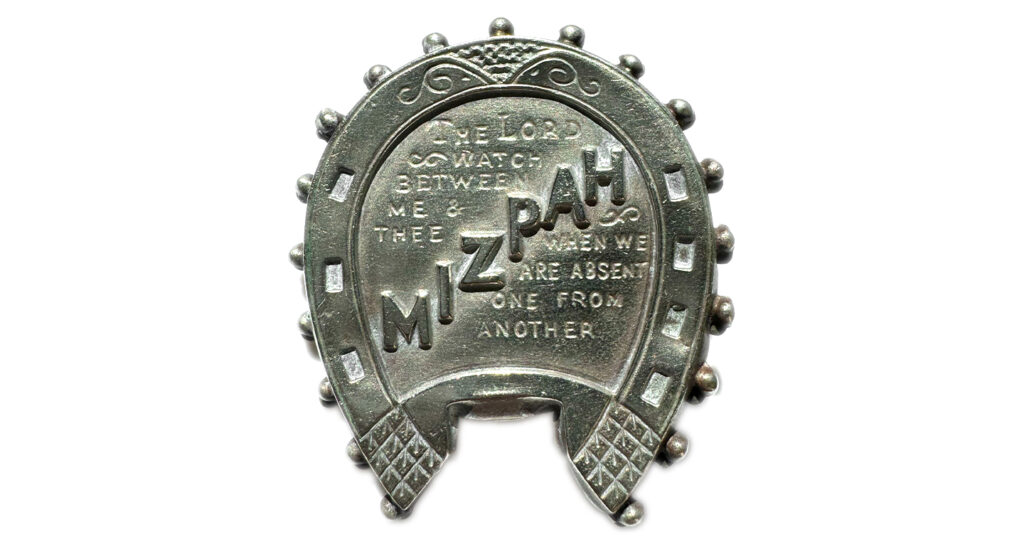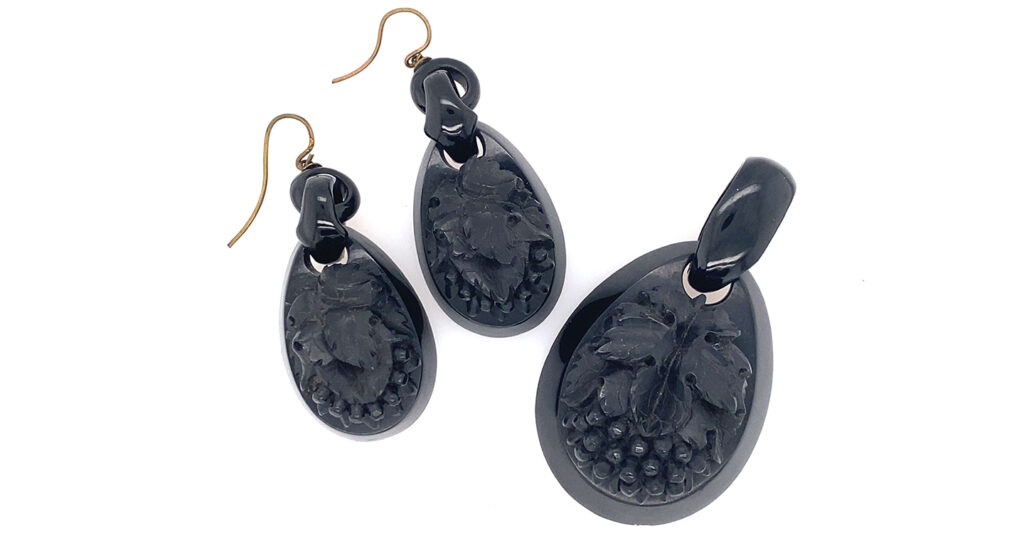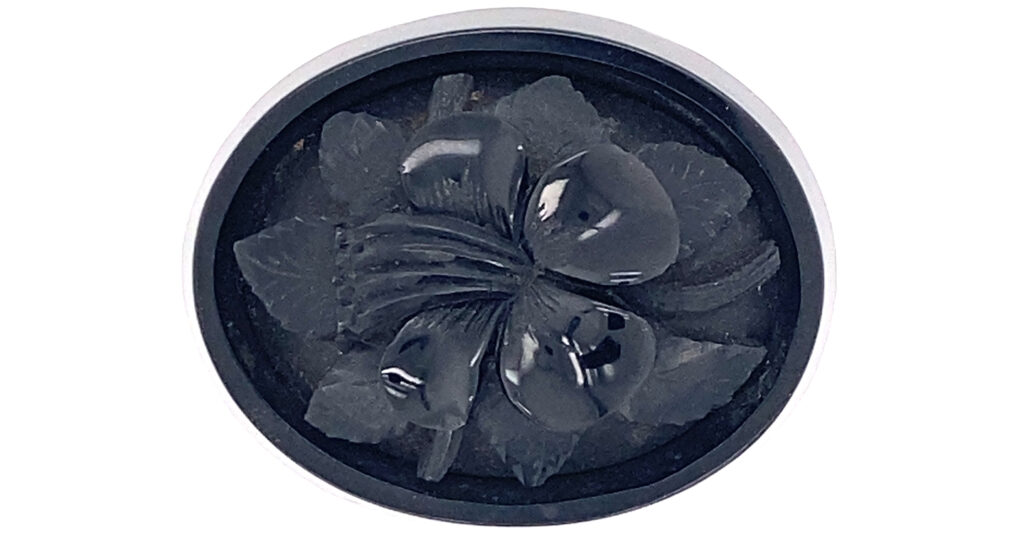Empire Style Takes Control in this Victorian Brooch
Bolder style was in its element during the 1860s. This can be attributed to the mourning of Queen Victoria from 1861, but also tells of the evolution in costume and everyday dress.
The larger styles of the mid-Victorian era had taken hold, with female fashion becoming larger and the jewels needed to adapt.
By the latter century, costume and function were tightly connected for women. Dresses of separate bodice and skirt were worn in bombazine covered in crape. Underwear was often white chemises, drawers and underpetticoats slotted with black ribbon. Black caps, crape trimmed bonnets, and long veils.
First mourning lasted one year and a day, outdoor garments for this would be shown by the plainness and amount of crape, jet jewellery was permitted. After one year and a day, Second stage was introduced. This involved less crape and its application to bonnets and dresses became more elaborate. It was frowned upon if this period was entered into too quickly and it lasted nine months in all. The Third stage (or Ordinary stage), introduced after twenty-one months, involves the omission of crape, inclusion of black silk trimmed with jet, black ribbon and embroidery or lace were permitted.
Post 1860, soft mauves, violet, pansy, lilac, scabious and heliotrope were acceptable in half mourning. This period lasted three months. The English Woman’s Domestic Magazine stated that ‘many widows never put on their colours again’ and this was quite a statement for the identity of the woman, which was held under the veil of mourning and family symbolism for the rest of her life. Hats, shawls, mantles, gloves, shoes, fans all changed during mid century, and pagoda sleeves from 1850-70 were fashionable, designed to be stitched to the outer sleeve to cover modesty from the lower arm and wrist. Wide skirts from the 1850s-70s, tie back fashions of the late 1870s and the ‘S-bend’ look of the early 1900s all were adapted to mourning fashion, without a clear definition of difference between them. Throughout the post 1880s decline, in the 1890s, women would wear their veils at the back of the head only, showing hair beneath bonnets at the front for first stage mourning. This defiance was quite bold and marked a large turning point for mourning structure.
Which brings us back to the style of this brooch. It adapted well into its paradigm of the times, worn at the neck and formalising the styles of the previously popular Gothic Revival. This was the formal style of mourning for a burgeoning empire and a standardised design that focused on the principal of mourning (without any excess in flourishes) and stated the fact quite clearly.







